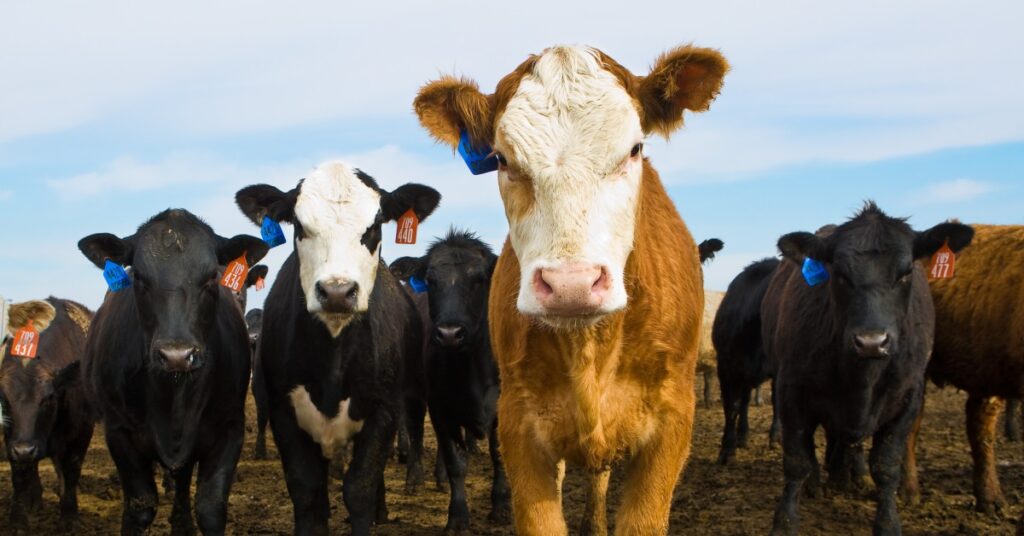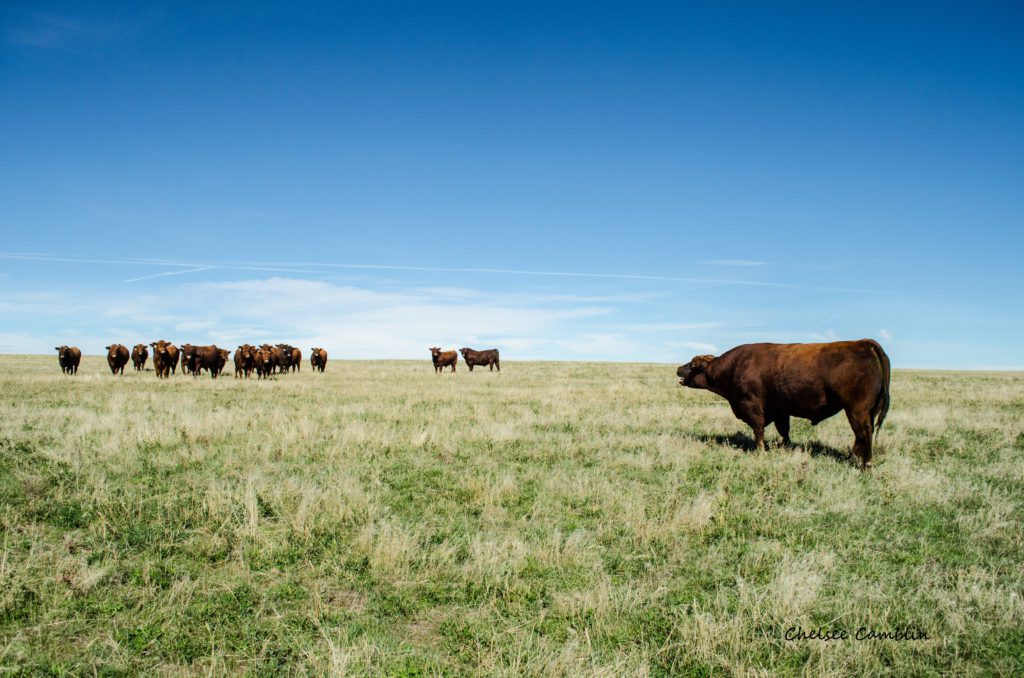As new cattle arrive at the feed yard, phone calls inevitably follow to veterinarians and nutritionists regarding bloat. Cattle are transitioning into their new world. Freshly weaned calves experience new feeds and become bunk-broke while adjusting to their new surroundings. Consistent dry matter intake is hard to achieve with all this variation, which invites digestive issues and increased bloat potential.
Bloat is simply gas that accumulates in the rumen with nowhere to go. Normally, gas produced during rumen fermentation is eructated (belched) out. When gas cannot escape, bloat builds, causing distention of the left abdomen and pressure in the rumen. Cattle reduce intake or quit eating altogether, while appearing distressed and fighting to breathe. Ruminal expansion interferes with the diaphragm and lungs, which inhibits breathing and tissue oxygenation. Death from asphyxiation often follows.
Bloat types and causes
Trapped gases can combine with plant material to form a stable foam that cannot be released. This frothy bloat is often referred to as pasture bloat and is most often related to the consumption of forages (e.g., alfalfa, clovers, winter wheat) containing highly soluble proteins. Feedlot bloat is often referred to as dry bloat or free-gas bloat and most commonly occurs as a secondary result of acidosis. Dry bloat can also result from grub treatment, which can cause inflammation of esophageal tissues. Anytime the esophagus is restricted or blocked, and the animal loses the ability to eructate ruminal gases, bloat risk increases.
Frothy bloat caused by ingesting plants like alfalfa can be avoided using sound grazing management. If this type of bloat occurs with confined feeding, diet reformulation should reduce the inclusion of bloat-causing plants. Poloxalene is a medication used to reduce frothy bloats. A common form of Poloxalene delivery when grazing is to use a supplemental molasses block (Sweetlix® Bloat Guard® Pressed Block) or straight Poloxalene can be included as an ingredient when feeding a TMR.
The incidence of acidosis-related bloat can also be reduced with management. Adapting ruminal microorganisms to the diet and reducing the variation of the ration and/or intake can minimize digestive upset. Consistency of diet is key for bloat prevention and starts with a balanced ration. Bunk management, careful feed mixing, and uniform delivery are also necessary. Overconsumption of grain or fines, as well as sorting, increases the risk of acidosis and bloat. The goal is to reduce variability from one meal to the next, and gradual, consistent changes when transitioning diets.
Correctly starting cattle on feed minimizes the risk of digestive upsets. Fermented feeds and byproducts can require more transition time for naïve cattle. Once cattle are transitioned to a new diet, feed to satisfy their appetite. Keep in mind that stresses like weather or processing cattle can influence intake and appetite. It is a delicate balance of not shorting feed delivery, or getting too aggressive and over-feeding. Either can lead to intake inconsistency.
Fines, as well as the rate and amount of intake, can contribute to acidosis. Moisture can reduce the separation of fine ingredients in the bunk by conditioning the ration. However, a diet that is too wet can also detrimentally influence intake. Another approach to reducing the incidence of acidosis is feeding ionophores such as Monensin or Lasalocid. These medications help shift carbohydrate fermentation away from methane gas production in favor of usable energy.
Seasonal weather changes can also trigger bloat, particularly in the spring and fall. Significant temperature swings can affect feed and water intakes, contributing to acidosis. Other weather events, like snow and wind, can also impact intakes, creating a risk of bloat.
Bloat intervention
Bloating can be an emergency, and a quick response with the correct equipment can save the animal’s life. A stomach tube or rubber hose approximately 0.75–1 inch in diameter and 8–10 feet long can be used to evacuate trapped ruminal gas. It can also serve to get an anti-foaming agent into the rumen. Mineral oil, vegetable oil or an approved de-foaming agent can break up the stable foam. This allows gas from the foam to be released. Be mindful that drenching a bloated animal can be dangerous if liquid is inhaled into the lungs. This risk is heightened when there is an obstruction in the esophagus. In extreme cases, a large bloat needle can be inserted into the distended rumen, between the last rib and hook bone, below the edge of the loin. If the animal has frothy bloat, then a trocar or even a sharp knife can be used to release the foam and gas. The incision must remain clear of obstruction until all the gas is released. In these more extreme cases, veterinarian assistance for the procedure and after-care may be required.








